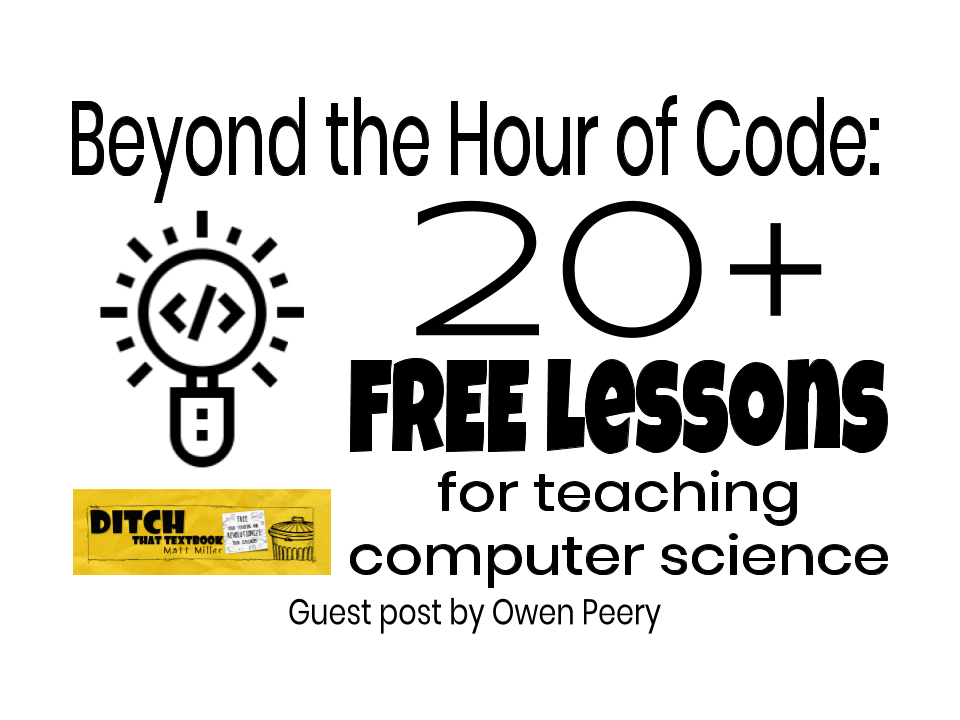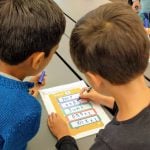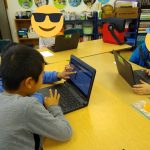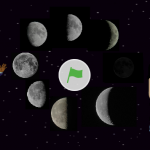
The Hour of Code highlights the power of teaching and learning computer science. It’s exciting, engaging, and fun. But what happens once the Hour of Code is over? Here are 20 FREE lessons to bring computer science into your classroom to stay.
This post is written by Owen Peery, a K-5 computer science teacher in San Francisco, California. He is part of the CSinSF team that has made a commitment to expand computer science education to every school K-12 in the San Francisco Unified School District. You can connect with him on Twitter @owenpeery.
Computer Science Education Week is the first week of December. Have you heard of, participated in, or seen images of the Hour of Code on social media? If so, you probably know how engaged students are and how creatively they solve problems when learning computer science.
If you have wondered how to harness that excitement and bring more than just a one-off experience with coding and computer science to your students, keep reading.
What follows are 3 ways to get started with a deeper dive into computer science for beginners, intermediate and more experienced teachers. These lessons are all part of the curriculum created by the CSinSF team and they are all completely free!
I don’t have computers available to me or I am a total beginner.
Unplugged activities offer opportunities to learn the fundamentals of computer science without requiring the use of a computer. While many curricula use unplugged activities with younger students, they are great learning tools for students of all ages. If you don’t have access or have infrequent access, to computers or tablets, try some of these unplugged sequences of lessons.
Unplugged progression for elementary.

Students learning about loops through an unplugged lesson.
This unit introduces what makes a computer. Then students imagine everyday objects as computers. Next, they learn sequencing and remixing with secret handshakes. Students continue with pattern recognition and decomposition. Finally, they focus on algorithms and perseverance.
All of the lessons are unplugged and can be completed with everyday materials and minimal prep. Although these lessons are created for students as young as kindergarten they can be adapted for any grade level.
Lesson 1: What is a Computer?
Lesson 2: That Could Be a Computer!
Lesson 3: Secret Handshake Sequencing
Lesson 4: Thinking With Patterns
Lesson 5: Break it Down!
Lesson 6: Nevertheless, They Persevered
If your students complete these activities or are ready for more in-depth lessons you can move on to orange and then the yellow level lessons.
Unplugged lessons for older students.
In these lessons, students will explore what makes a computer a computer, gain a better understanding of their inner workings, and finally learn about the history of computers.
A-1 What is a computer?
A-2 What’s Inside Your Computer?
A-3: The History of Computers
0-2 What is a Computer Program?
I have some computers or some experience but I can’t dedicate a lot of time to computer science.

Students work together by pair programming as they learn to code in Scratch.
The following unit introduces the Scratch coding language and environment. You will need computers or tablets to create projects in Scratch. Consider doing some of the unplugged activities from above before doing the following lessons.
This progression will give students the foundation needed to build more complex projects following tutorials or making their own creations. If you have time for just one unit of study in Scratch, choose these first 5 lessons, to begin with.
Lesson 1: Introducing Scratch
Lesson 2: Pair Programming
Lesson 3: Peer Feedback
Lesson 4: Exploring Sequence
Lesson 5: 10 Block Challenge
When your students have mastered the Scratch basics, if you have more time, have them try the following sequence. It will introduce events and culminate with the All About Me project. This will show them how to create more complex projects in Scratch.
Lesson 6: Introducing Events
Lesson 7: Exploring Events
Lesson 8: About Me: Planning
Lesson 9: About Me: Building
Lesson 10: About Me: Showcase
I have computers, I have some knowledge, and I’m ready to dive deeper with curriculum integration.
You taught a few of the unplugged lessons from the list above. You taught the 10 lesson sequence. Your students created their All About Me projects. Everyone is excited and ready for more.
So what’s next? Curriculum integration.
Integrating computer science content into your own curriculum is the exciting step. Rather than trying to learn more and teach more, consider how to simply extend the All About Me project into other domains. Your students already have a grasp of how the project will work and have learned the tools. Now let them use that structure, and transform it, but in other content areas.
Curriculum Integration ideas using the All About Me project examples:
- All About the phases of the moon
- All About the seasons, or one season in particular
- All About the continents, or any country, city, state, region
- All About solids, liquids and/or gases
- All About the Water Cycle
- All About holidays around the world
- All About computers, or any specific part or function of computers
Finished with all of these lessons? Try one of the full sets of FREE curricula from csinsf.org for a complete course. If you are not ready for a full course, keep remixing ideas in the All About Me vein to go deeper with content integration. The sky’s the limit.
Don’t forget to connect with other educators on social media to share your stories and get help. Follow the hashtags #csk8 and #CSinSF to stay connected.
More computer science resources:
For notifications of new Ditch That Textbook content and helpful links:
Are you looking for quality, meaningful professional learning that both equips and inspires teachers?
Matt provides in-person and virtual keynotes, workshops and breakout sessions that equip, inspire and encourage teachers to create change in their classrooms. Teachers leave with loads of resources. They participate. They laugh. They see tech use and teaching in a new light. Click the link below to contact us and learn how you can bring Matt to your school or district!
Is Matt presenting near you soon? Check out his upcoming live events!




[…] Beyond the Hour of Code: 20+ free lessons for teaching computer science […]